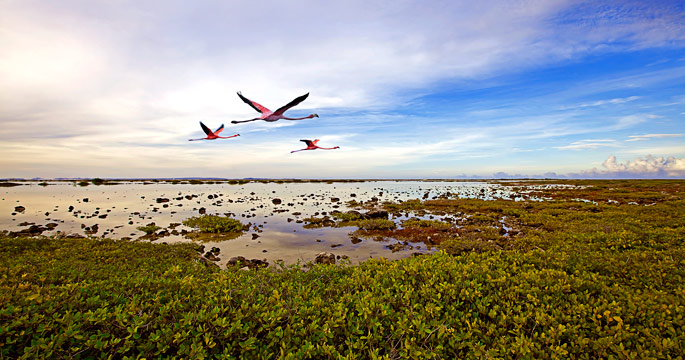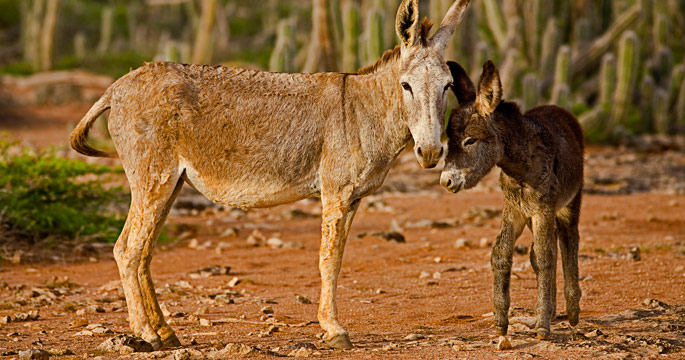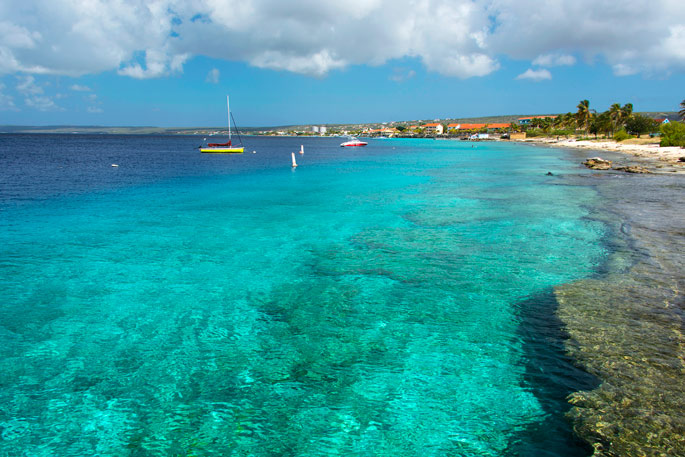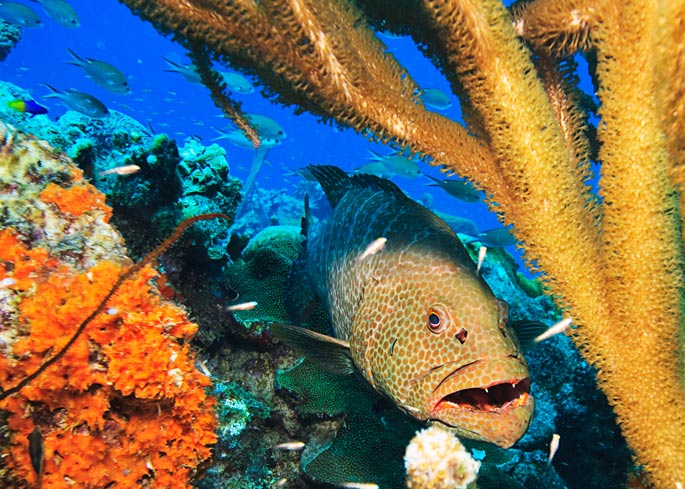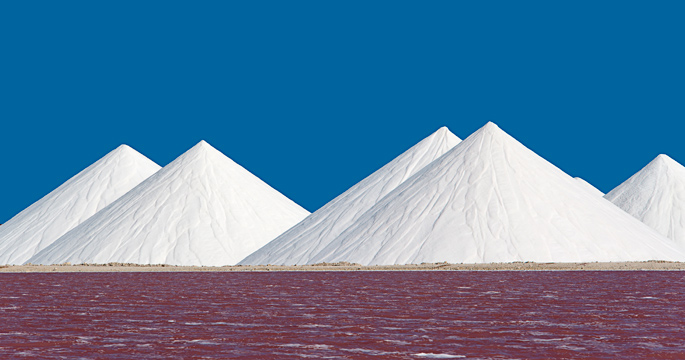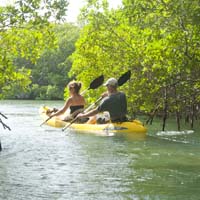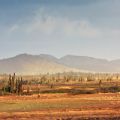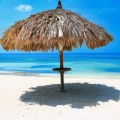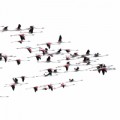A leader in eco-tourism, Bonaire is surrounded by an underwater marine park protected in perpetuity. Today and tomorrow, divers and snorkelers will explore pristine reefs pulsing with sea life. Topside, adventurers bike and hike along the coast and in the rugged parched interior.
1 Flamingo Road
The quirky yet magnificent Caribbean flamingo calls Bonaire home. Most live and breed at Salt Lake, a nesting ground that’s off limits to humans—though you can get a peek of pink from the road (bring binoculars for a closer look). Sightings are also plentiful at the landlocked salt lake of Gotomeer in Washington Slagbaai National Park, where the big birds can be seen preening and feeding on insects along the water’s edge. The flamingo is Bonaire’s signature icon, so protecting the island’s 15,000 pink-feathered residents is high priority.
2 Donkey Crossing
You’ll see the signs along the roadside as you travel in the countryside. The island’s feral donkeys graze on succulents and sparse green leaves growing along the sloping landscape. Occasionally, a couple will stop dead in the middle of the road en route to greener pastures. Night driving commands some caution as a stray could be around the next curve. Originally brought in by the Spanish, the pack animals once served as a means of transportation. Today they are free to roam the hillsides and like all living creatures on Bonaire they are protected; more than 400 live on a sanctuary where visitors can see them up close.
3 Marine Park
Thanks to dive pioneers like Capt. Don Stewart and others passionate about the underwater world, the reef system around Bonaire was declared a national marine park in 1979. Today STINAPA, a government-commissioned NGO, overlooks the park like a favored child. The most recognized marine park in the Caribbean, it is permeated with colorful stands of coral and the shimmering iridescence of 350 species of fish. Bonaire took a strong conservation stance in the early ’70s to watch over the turtle population, prohibit spearfishing and protect reefs by installing mooring balls to prevent anchor damage. Divers are dropped by boat or enter the water from shore.
4 The Slagbaai
Impressive in size, the 13,500-acre Washington Slagbaai National Park covers nearly 20 percent of the island. It is a testament to Bonaire’s conviction to preserve the environment above ground as well as beneath the sea. The grounds of two former plantations were purchased by the government and established as a national treasure in 1969. The park, which celebrates its 45th birthday June 1, 2014, is home to 190 species of birds, free-roaming goats, donkeys, lizards and an array of flowering cacti.
5 Protecting Parrots
Bonaire’s strong conservation ethic and love for nature has helped to protect the yellow-shouldered Amazon parrot (Amazona barbadensis). The colorful bird, known locally as the lora, is green and yellow and shows a display of blue and red feathers in flight. These birds arrive from Venezuela and Margarita Island and find the rocky cliffs and holes in Bonaire’s lignum vitae and gum trees ideal for nests. Noise and construction chases them away, so researchers love the fact that nearly 20 percent of Bonaire is under the watchful eye of park rangers, giving the approximately 800 yellow-shouldered parrots remaining in the wild a chance for survival.
6 Dutch Treat
Young Dutch entrepreneurs are drawn to Bonaire for the laid-back atmosphere, sunny skies and business opportunities made possible by the island’s long association with the Netherlands. They open restaurants, bars and small shops, bringing with them their European attitudes. This bohemian Euro-flair on a tiny island stands out and gives Bonaire a touch of international appeal. You can shop for gourmet Dutch treats at the supermarkets, learn a few Dutch words and linger over long meals at some of the trendy outdoor cafes and restaurants in Kralendijk.
7 Easy Access
There are 85 officially named dive sites off of Bonaire and Klein Bonaire, and almost half are reachable by shore. Divers and snorkelers can load their gear in a rental car—or one of the pickup trucks specially equipped with gear racks—and follow the coastal road to rock markers painted bright yellow and emblazoned with the name of the site. Most sites have convenient parking areas just a short walk from shore, and the swim to the reef is equally easy.
8 The Salt Pans
As you drive to the southern tip of the island, you’ll see what looks like snow-covered mountains. In reality, they aren’t. They are actually mounds of salt, drying and crystallizing for export. During the island’s colonial period, salt had been an important trade commodity, harvested by hand and carried on backs of men to ships that sailed to Europe. Today the natural product that comes from the sea is pumped by machine into ponds, the brine is then pumped into crystallizers and after it is harvested, washed and dried for export. While most of the salt heads to foreign lands you can buy a bag of sea salt crystals in local shops to take home for a soak.
9 Windsurfers’ Place
While the sport might be waning in some parts of the world, it’s still big on Bonaire. People travel from Europe and North America for a chance to sail in steady winds, ranging from 15 to 20 knots in the winter months and 25 to 30 knots during the high winds of summer. The warm waters of Lac Bay, coupled with side onshore breezes, make the spot one of the best in the Caribbean. For the neophyte the best place to learn is inside the protected bay, where shallow waters and a sandy bottom make learning that first beach or water start a reality. A few days of practicing your jibes in the side onshore winds will take you to the next level before you head home.
10 Natural Art
Artists find inspiration in nature both above and beneath the water. Janice Huckaby depicts underwater life and natural settings of the island in watercolors, oil and acrylic. Sculptures of mermaids and turtles are also in her realm of imagination. Germaine Nijdam finds discarded items on the coasts and turns them into wall art. Driftwood, plastic bottles and rope become fish, sunbursts and quaint island vignettes. She also makes benches and stools from wood that once floated in the sea. Both local and visiting artists are celebrated in an annual art festival. Dia di Arte at Wilhelmina Park in Kralendijk takes place the first Sunday every July.

